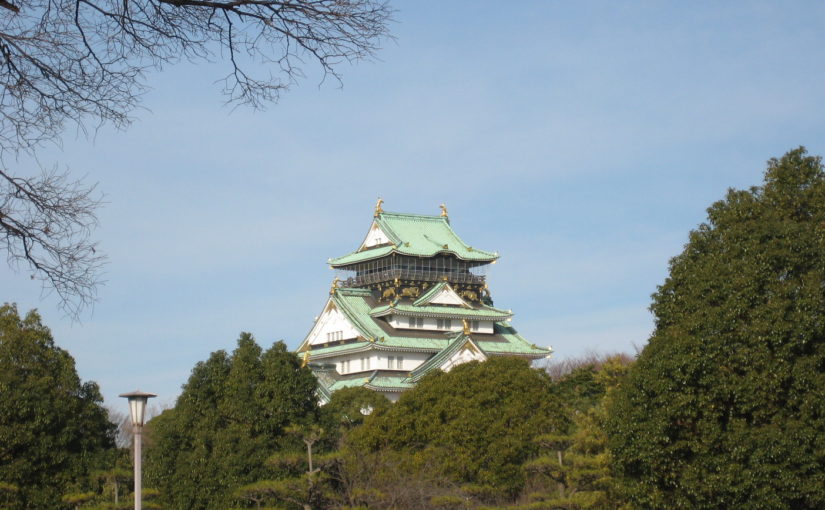Travel period Jan 2013
The Symbol of Osaka
Osaka Castle is the iconic symbol of Osaka, which has been handed down through the dramas in history to the present day. It’s played an important role in the unification of Japan during the samurai era of the sixteenth century.
A Brief History of Osaka Castle
It was built by General Hideyoshi Toyotomi in 1583 as a display of power and grandeur after unifying Japan, the castle grounds cover approximately 15 acres. The Castle was completed in 1586 and become the center of the new unified Japan under Toyotomi rule.
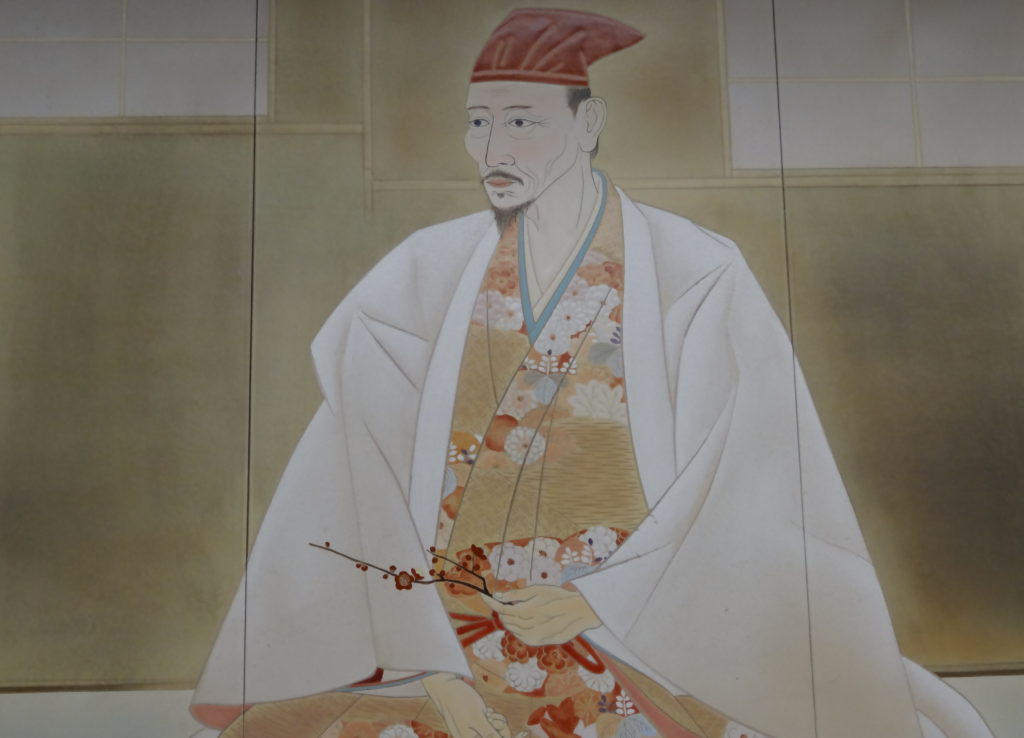
After Hideyoshi’s death, with Osaka Castle passed on to his young son, Toyotomi Hideyori, Osaka Castle was attacked by Tokugawa Ieyasu (in the Winter Siege of Osaka). The Toyotomi forces were overwhelmingly outnumbered, but managed to fight off Tokugawa-led samurai army.
During the second siege of Osaka Castle (Summer War of Osaka), the original castle was finally destroyed by the forces of Tokugawa Ieyasu and terminated the Toyotomi lineage in 1615. This brought about the end of the powerful Toyotomi clan and led to the undisputed power of the Tokugawa Shogunate, which would rule Japan for the next 250 years.
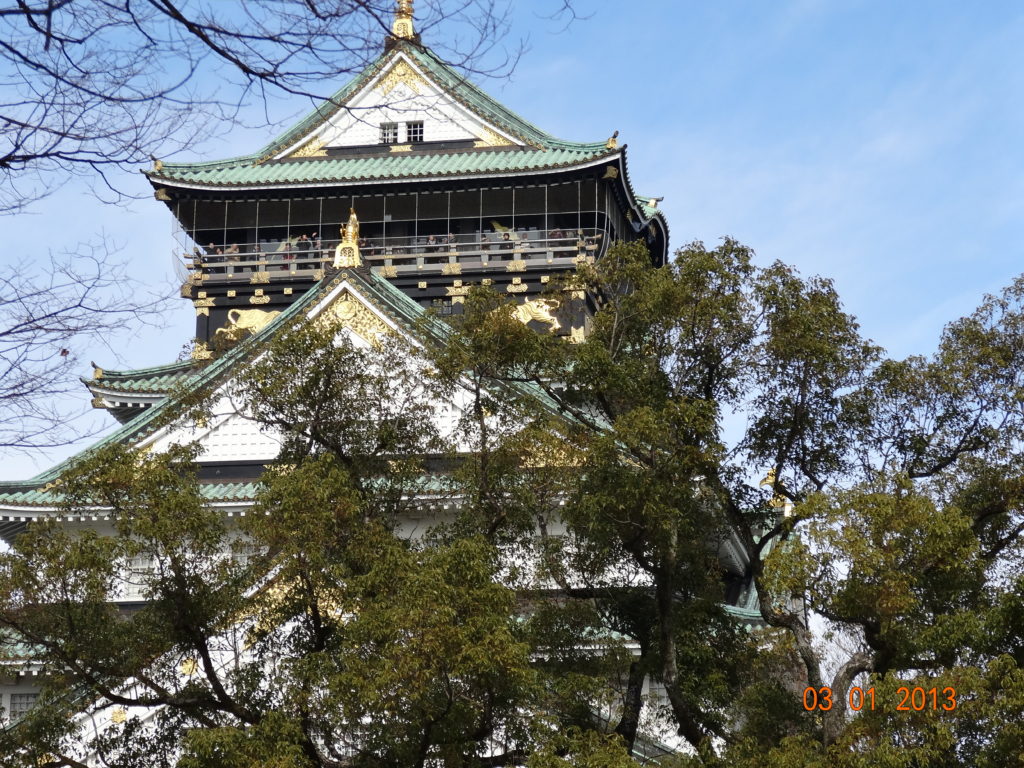
Osaka Castle was rebuilt by Tokugawa Hidetada in the 1620s, but the main castle tower was struck by lightning in 1665 and burnt down. It held the castle under its direct control until 1868, when the Tokugawa Shogunate lost power and the castle fell.
In 1931, the main tower of the castle was reconstructed in the center of Osaka Castle, which was used as a military base, with funds raised by the citizens.
Getting to the Castle
We took the JR Loop Line to JR Osakajokoen Station from JR Osaka Station, which brought us to the northeast side of the park. Alternatively, you can take the Tanimachi Subway Line and Chuo Subway Line to Tanimachi 4-chome Station.

Getting to the castle from the train station was a long walk but the scenery all around makes it a pleasant place to stroll.
The Castle
The castle tower is surrounded by secondary citadels, turrets, impressive stone walls and moats. The Nishinomaru Garden, encompassing the former “western citadel”, is a lawn garden with 600 cherry trees, a tea house, the former Osaka Guest House and nice views of the castle tower from below. The surrounding park itself is a famous spot for Hanami season (cherry blossom).
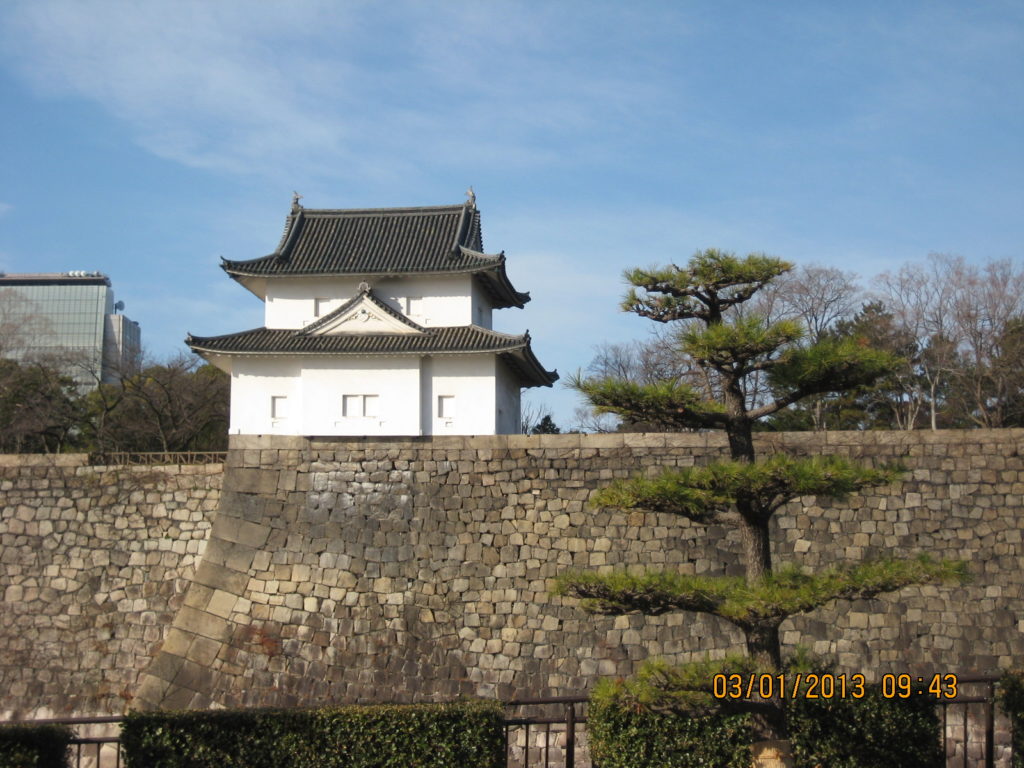
The five-story main tower featured an exterior covered in gold leaf and it also featured eight giant fusetora (golden tiger) decorations and golden shachi (a mythical creature with the head of a tiger and the body of a carp) roof ornaments, believed to protect the castle against fire.
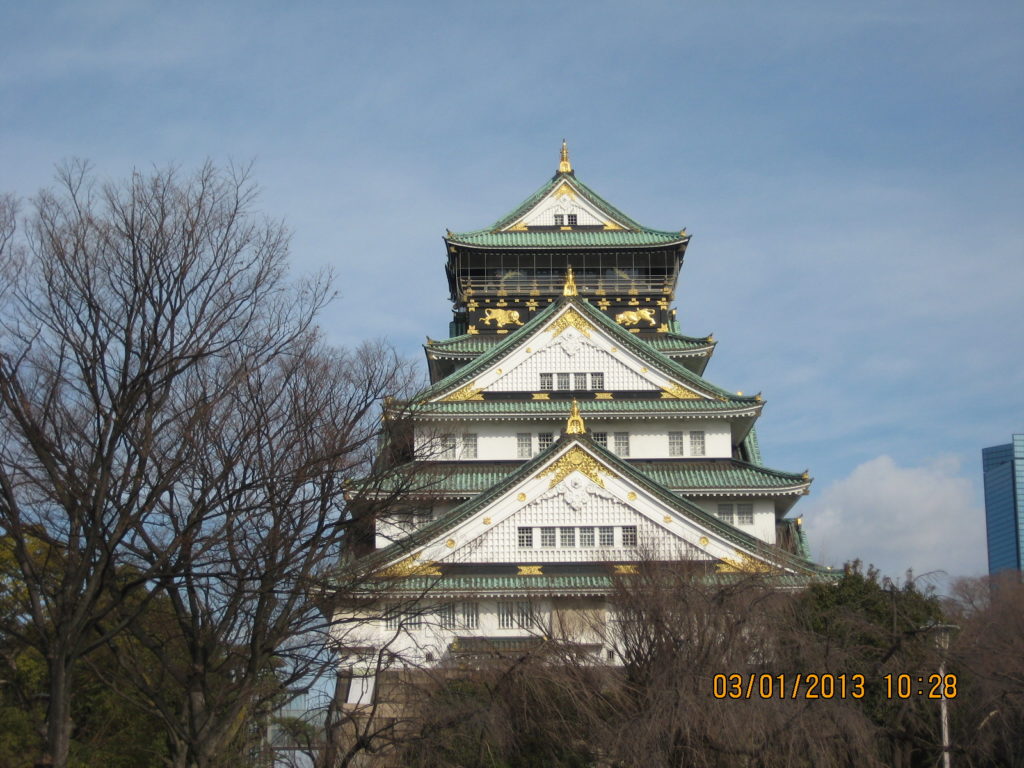
The present structure is actually a 1931 reconstruction and later refurbished in 1997. The tower we see today has been replaced with the iron reinforced concrete instead of wood.
The 54-meter Gokurakubashi Bridge was built across the inner moat of the castle. The original bridge was burned down during the war and the current bridge was built in 1965 which is known for its loose arch.
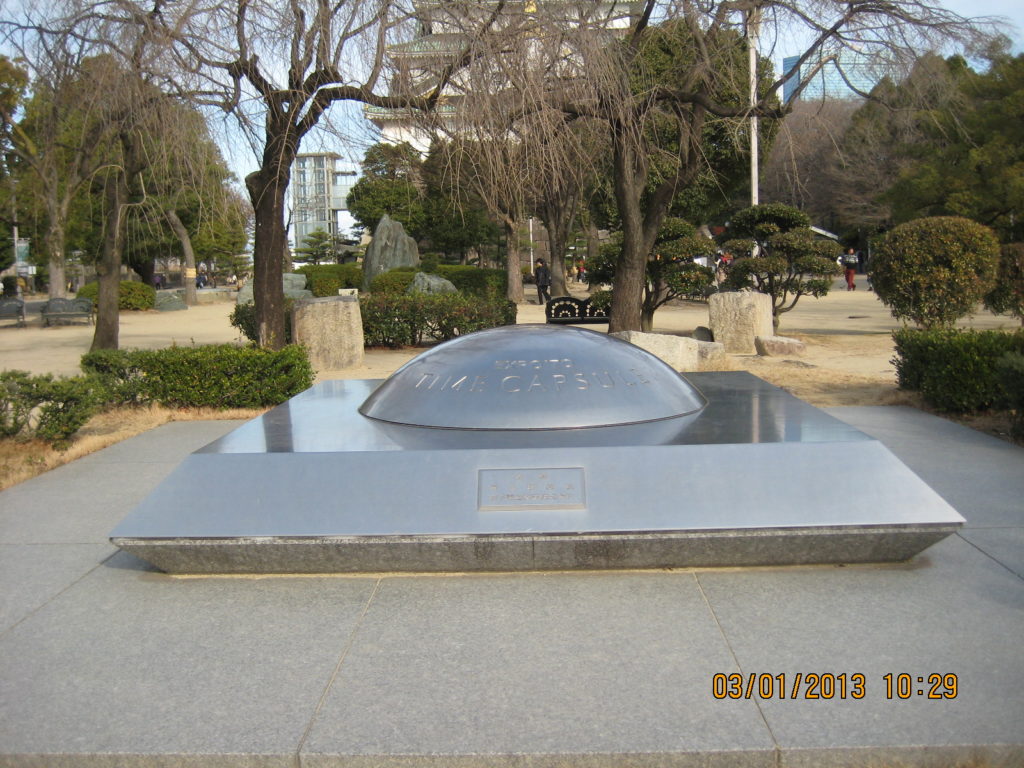
The castle tower is now entirely modern on the inside and even features an elevator for easier accessibility. It houses an informative museum about the castle’s history and Toyotomi Hideyoshi with over 10,000 historical artifacts on display.
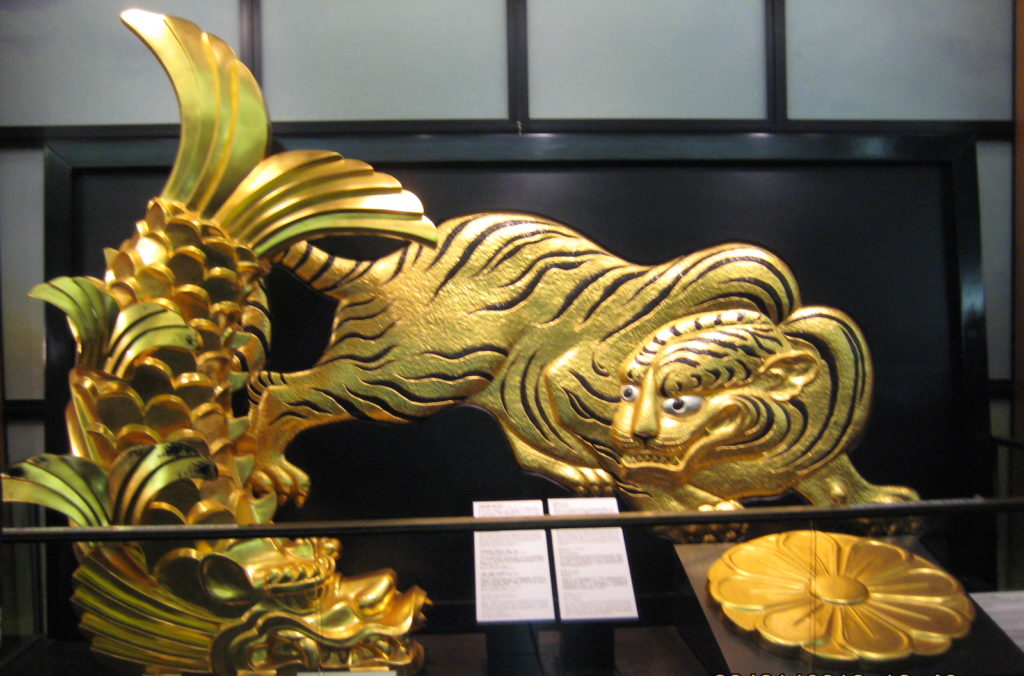
Inside the castle there were a few floors of exhibits to explore with explanation placards in English. During our visit the museum was crowded with people herding from one placard to the next reading.
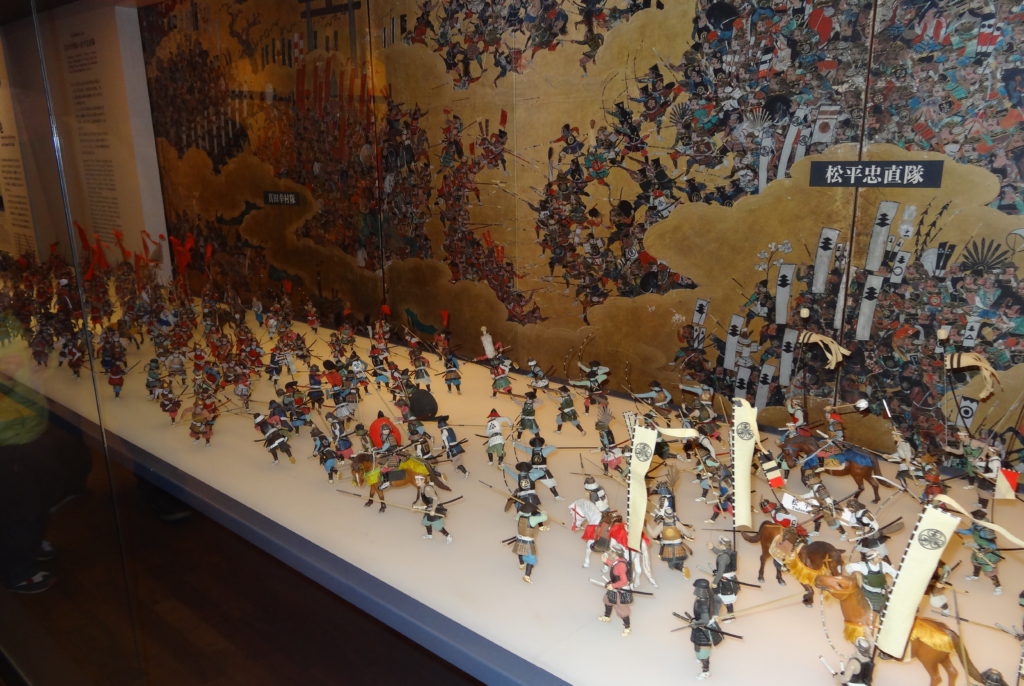
At first, we felt a bit underwhelming. We were expecting for the inside was going to look like an old castle. Instead we were greeted with a modern history museum. However, we could understand after considering everything Osaka Castle has been through; since its construction, Osaka Castle repeatedly featured as the battleground of the major wars in Japanese history.
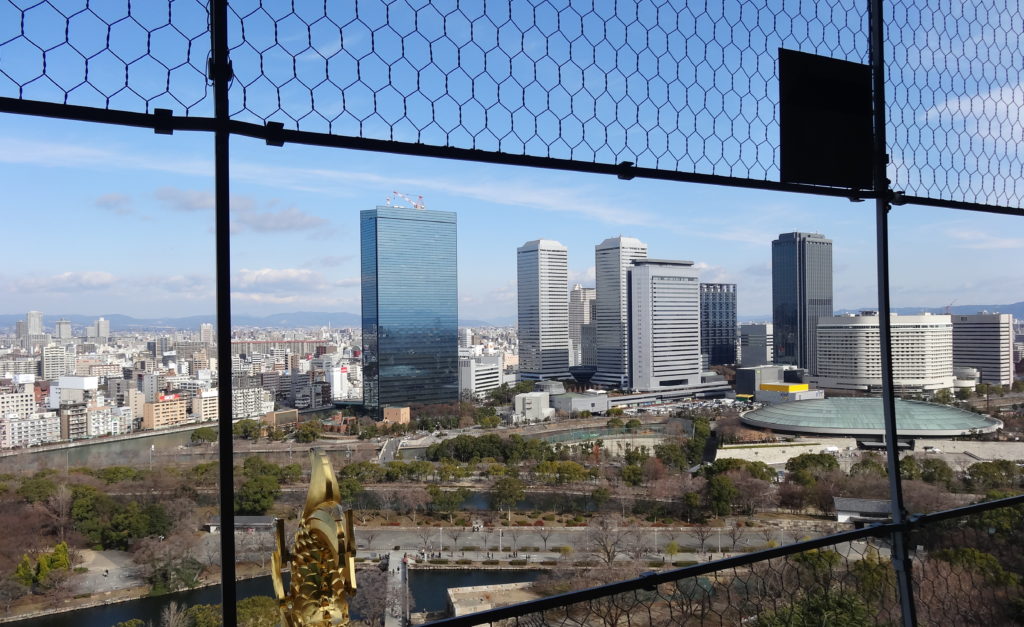
The highlight was the view point from the top floor of the castle. From here you are positioned on the top of the hill surrounded by the moat and get city views as far as the eye can see. It was spectacular!

Overall, Osaka Castle is one of the country’s most beautiful castles, it is an impressive castle, featuring many elements associated with feudal Japanese castle architecture. If you are interested in Japanese history, Osaka Castle worth a visit.
The Castle Tower
Hours: Daily 09:00 – 17:00 (last admission at 16:30)
Closed: 28th December – 1st January
Admission: JPY 600
Nishinomaru Garden
Hours: Daily 09:00 – 17:00 (until 16:30 from November through February); open until 21:00 during the cherry blossom season.
Closed: Mondays (or following day if Monday is a national holiday), New Year holidays
Admission: JPY 200 (350 yen during the extended hours of the cherry blossom season)
Note: The information provided in this post was correct at time of publishing but may change. For final clarification please check with the relevant service.

